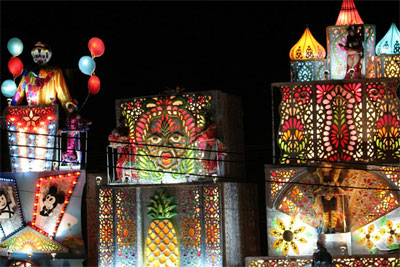The Charangas of Bejucal Carnival: A Deep Rooted Cuban Tradition
Photo Feature by Elio Delgado Valdés
 HAVANA TIMES – The Charangas of Bejucal, along with the Parrandas de Remedios and the carnival of Santiago de Cuba, are the most rooted festivities in the Cuban tradition and that have endured over time.
HAVANA TIMES – The Charangas of Bejucal, along with the Parrandas de Remedios and the carnival of Santiago de Cuba, are the most rooted festivities in the Cuban tradition and that have endured over time.
The Charangas began in the mid-nineteenth century, when slave owners gave their slaves off the 24th of December to hold their festivities. Initially they played music and danced around the church, but over time, more people joined in and they pooled into two groups, competing with each other to see which one put on a better show.
Currently, the two sides are called La Ceiba de Plata and La Espina de Oro, and each builds a float, which gets all the ingenuity of designers, technicians and artists. After several outings, accompanied by large crowds that dances to the beat of the music, a jury awards a prize to the winning side, for its originality and beauty.
In addition to the floats, bands and singers perform for the dancing public at different venues before the departure of these true works of art.
This photo essay includes some views of the floats, musical groups and Bejucal residents enjoying the dances
Click on the thumbnails below to view all the photos in this gallery. On your PC or laptop, you can use the directional arrows on the keyboard to move within the gallery. On cell phones use the keys on the screen.





























